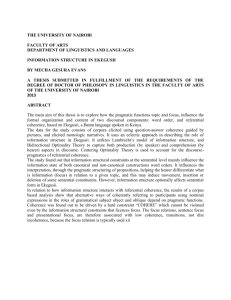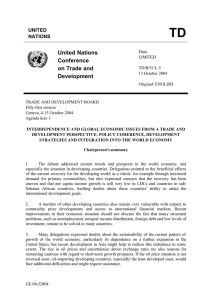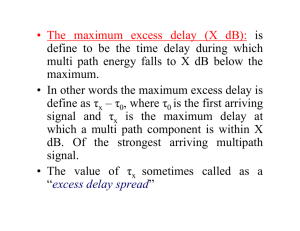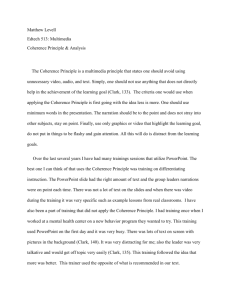Introduction to Health Systems
advertisement
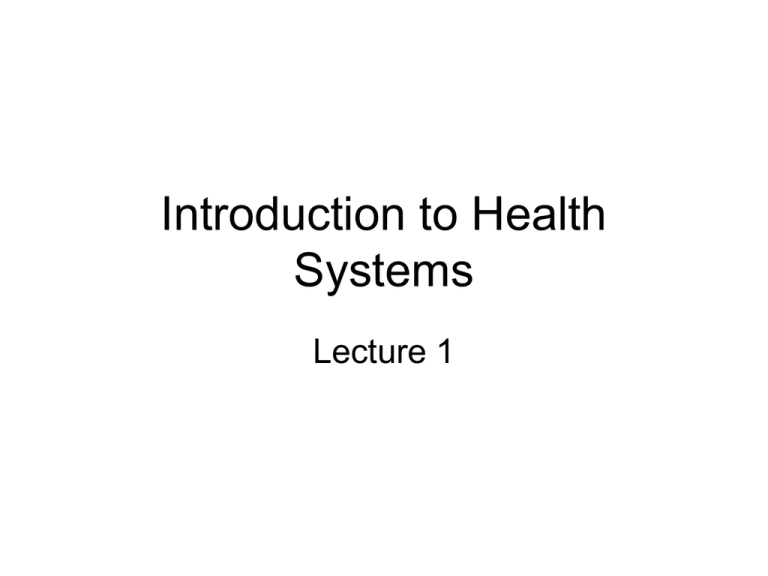
Introduction to Health Systems Lecture 1 Outline • Basic definitions – Different perspectives on health and health care – Definition of “Health Systems” • • • • How the pieces fit together Dimensions of functioning Syndromes of dysfunction Syndromic management Health is A Right • “… health, which is a state of complete physical, mental and social wellbeing, and not merely the absence of disease or infirmity, is a fundamental human right and … a most important world-wide social goal.” • Alma Ata Declaration-1973 Health Comes from Purchased Medical Care • “No man . . . has a right to medical care; if he cannot pay for what he needs, then he must depend on voluntary charity.” —Leonard Peikoff, The Ayn Rand Institute Health is due to Social Conditions • “The improvement of medicine will eventually prolong human life, but the improvement of social conditions can achieve this result more rapidly and more successfully.” – Virchow Important Distinctions • Health vs. Health Care – Health refers to a state of the human body and mind – Health Care refers to chemicals, devices, and services used by people to improve their health • Health insurance – A system of paying for unpredictable needs for health care Basic Definitions • Economic Units – groups of individuals brought together for a common purpose • Economic Agent– an individual with a specific role in the system, e.g. a patient, a nurse, a manager • Institutions– Norms, rules of conduct, established procedures e.g. property, corporations, paying fines, tipping waiters Definition of systems • Economic systems – a collection of economic units, agents, and institutions that interact coherently; adapting and adjusting to the social and physical environment • (Expect definitions of coherence, adaptation, adjustment) • Health systems – economic systems that are concerned with human health Adaptation, Adjustment, Coherence • Adjustment – transforming and redistributing resources to improve function, exploit opportunities, resolve weaknesses within existing institutions • Adaptation – evolving or planning new institutions to solve problems • Coherence – Degree to which agents and units coordinate their activity for common purpose 7 Principal Health Systems 1. 2. 3. 4. 5. 6. 7. Primary health service delivery system Health workforce Leadership and governance to assure quality Health systems financing Supplying medical products and technologies Health systems information Households Mistake 1 • Mistaken to think that the public sector service delivery system is “the health system” • Public sector is never the whole “health system” – Leaves out households – Private finance, Private supply chain – Private workforce training • Health systems are plural Mistake 2 • Mistaken to think that studying health system means looking at the organization chart of the public sector Understanding Systems • Analogy: economic systems are to society what organ systems are to the body • There is no “system” there are “systems” • Dysfunction in one affects others • What do systems “do”? – Adjust – Adapt – Cohere • How do scientists study? – Reductionism • Identify institutions • Examine adaptations etc. • No best system Some Examples of Institutions • Households • Primary health service delivery system • Financial protection system • Governance • Drugs and supplies distribution system • Folk remedies • Clinics • Insurance • Licensing • Markets • Inventory Some Examples of Adjustments • Folk remedies • Clinics • Special feeding • Outreach campaign • Insurance • Lowering copay • Licensing • Markets • New examinations • Making a drug over the counter Pop Quiz • Which of the following are units in a health system? – The neighborhoods in Hanoi – PEPFAR – Hewlett Packard – Medical malpractice courts Examples of Adaptations • Decentralizing governance • Starting a government health insurance program • Deploying barefoot doctors Examples of Coherence • Relying on tradition • Motivation is an essential tool for • Using market signals coherence • Commanding and controlling from above • Examples – Material incentives – Moral incentives – Coercion Power • Power is relative to the motivations that are operating in a system • Examples – Control of money, titles, space, assets, status – Power of coercion (different forms of coercion) – Control of information Exercise • Reflect on your role in your health system – Do you have power? – What form does it take? – How do you deploy it? • If your goal were to be in a position to do the most to improve your health system – Who would you be? – Where would your power come from? Instruments • Direct Controls – Regulations – Prohibitions – Compulsions • Indirect Controls – Tariffs/Taxes – Subsidies – Grants • Government as a consumer • Government as a producer Government Interventions • Provides – Provides health insurance – Provides health care – Maintains healthy environment – Informs people about healthy lifestyles • Sustains – Funds health research – Funds health worker training • Maintains standards – Licenses health workers – Approves drugs and devices – Approves hospital construction Health Policy Mixes Multiple Objectives • Objectives about “Health Insurance” – Protection against the unpredictability of health care expenses • Objectives about “Health Care” – Delivers only “costworthy” (efficient) health care – Equity and fairness in access to health care – Making health services more respectful, kind, friendly… • Objectives about “Health” – A special concern for the health of disadvantaged groups – A special concern for the health of workers (human capital) – Financing public goods that affect health • Social objectives – Redistribution of income between rich and poor, healthy and sick, powerful and weak Dimensions to Assess 1. 2. 3. 4. 5. 6. 7. Output Stability Fairness Efficiency Protection Freedom Innovation • We will study these 7 dimensions across the many institutions that make up the 7 major health systems Example 1: • Health care options for informal laborers – Commune has one health station with few supplies and limited services. – Commune has 2-3 private nurses, doctors, healers who accept cash or credit for services – There is limited insurance – There are limited check ups on the quality of services and the level of courtesy shown by providers Dimensions to Assess • • • • • • • • Output Stability Fairness Efficiency Protection Freedom Sovereignty Innovation Example 2: VHI • Health insurance for beneficiaries • VHI pays providers for care – Defined benefits package – Insurance pays government and select private facilities • Service quality is subject to regulation Dimensions to Assess • • • • • • • • Output Stability Fairness Efficiency Protection Freedom Sovereignty Innovation Summarizing • Distinguish: Health vs. Health Care vs. Health Insurance • Defined economic systems • Defined health systems – Agents, Units, Institutions – Adapt, Adjust, Cohere • 7 Health Systems • 7 Dimensions



